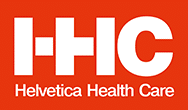Discover the universe within a blood tube with peripheral blood processing?
Blood carries oxygen, minerals, and waste materials throughout the body. It is a complex combination of cells, plasma, and proteins that work together to keep you healthy. A single blood tube contains an abundance of information about our health and well-being. By analysing the different components of blood, we can learn about our blood cell counts, immune system function, organ health, and more.
Blood tubes play a vital role in peripheral blood processing and at Helvetica Health Care you could find high-quality blood plasma serum products which can be used for various medical or research purposes.
What is peripheral blood?
Fluids that circulate through the heart, arteries, capillaries, and veins comprise peripheral blood. Its primary function is to remove carbon dioxide and other waste products from the body and to transport oxygen and other nutrients to the cells and tissues. Peripheral blood is additionally vital for hormone delivery, temperature regulation, and the immune system.
What is Peripheral Blood Processing?
Peripheral Blood Processing (PBP) is a technique that separates the different components of blood, including red blood cells, white blood cells, platelets, and blood plasma or serum. This process can be used to isolate specific blood components for analysis, research, or therapeutic purposes.
What are the components of peripheral blood?
Peripheral blood is composed of four main components:
- Red blood cells (RBCs): RBCs are the most abundant type of blood cell and are responsible for carrying oxygen to the body’s tissues.
- White blood cells (WBCs): WBCs play a vital role in the immune system and help to protect the body from infection.
- Platelets: Platelets are involved in blood clotting and help to prevent bleeding.
- Plasma: Plasma is the liquid portion of blood and contains water, proteins, and other nutrients.
Why is peripheral blood processing important?
PBP is an important tool for a variety of medical and scientific applications. For example, PBP can be used to:
- Diagnose diseases, such as leukaemia and anaemia.
- Monitor the effectiveness of treatments, such as chemotherapy and radiation therapy.
- Collect cells and molecules for research purposes.
- Prepare blood products for transfusion, such as packed red blood cells and platelets.
How is peripheral blood processed?
PBP is commonly executed within the confines of a clinical laboratory. As an initial procedure, a blood sample is obtained from the patient. After that, the blood sample is rapidly spun in a centrifuge tube. This induces the separation of distinct blood components according to their respective densities.
Following the centrifugation of the blood, the various components may be extracted and subjected to additional processing. For instance, the plasma may be extracted from the tube and utilised in transfusions or diagnostic procedures. Additionally, it is possible to extract WBCs for research objectives.
What are the applications of Peripheral Blood Processing?
Peripheral blood processing finds applicability in numerous research and clinical contexts. Among the most prevalent applications are the following:
Diagnosis of diseases and conditions: Peripheral blood processing can be used to diagnose a wide range of diseases and conditions by measuring the levels of different cells and molecules in the blood.
Monitoring disease progression: By monitoring changes in the concentrations of various cells and molecules in the blood over time, peripheral blood processing can be utilised to monitor the progression of diseases and conditions.
Assessment of treatment response: The response to treatment can be evaluated using peripheral blood processing to monitor changes in the concentrations of various cells and molecules in the blood over a period of time.
Research on blood diseases and disorders: Peripheral blood processing is used in research to study the blood and its components in order to better understand blood diseases and disorders.
What are the benefits of Peripheral Blood Processing?
Peripheral blood processing offers a number of benefits over other methods of isolating blood components. One of the main advantages is that it is a relatively non-invasive procedure. A small blood sample can be collected from a vein without the need for surgery or anaesthesia.
Another advantage of peripheral blood processing is that it is a very efficient way to isolate large quantities of blood components. This is important for research and clinical applications where large amounts of blood plasma, serum, or PBMCs are needed.
Peripheral blood processing is a great technique that can be used to isolate different components of whole blood for a variety of biomedical research and diagnostic applications. It is a relatively non-invasive and efficient procedure that can be used to prepare large quantities of blood components.
HHC specialises in supplying a range of clinical/biological samples with needed characterisation, special material including POSITIVE HUMAN BLOOD, PLASMA and SERUM, animal material and BIOPSY SAMPLES.
Thanks to our wide network, we can source material in more than 50 countries worldwide and provide access to a network of clinical laboratories, transfusion centres, reference centres and pathology laboratories. We can also offer a prospective sample collection based on the required parameters and specifications.
We also have access to large volumes of high-grade Human Serum, pooled or individual, and negative plasma in EDTA or Citrate.
ZEPTOGEL and SCRUBBED NYLON FIBERS are used to separate and isolate human lymphocytes from whole blood samples. Lymphocytes prepared by these methods are viable cell suspensions for tissue culture and enzymatic, biochemical and immunologic studies employing small volumes of blood.
Please read some of our previous articles to learn more about blood plasma and serum. To learn more about our products, please visit our website: https://www.h-h-c.com

